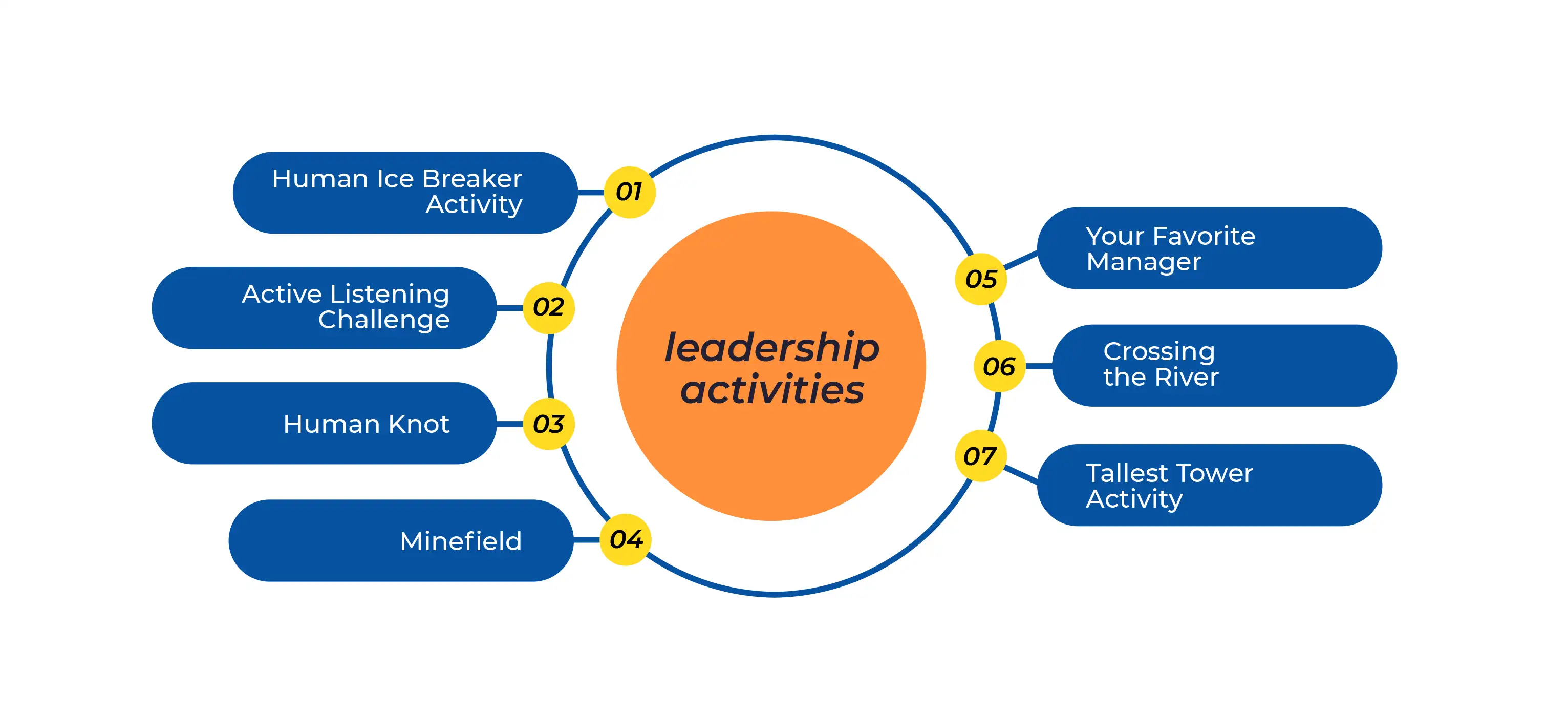 Neena Raj
Jan 25, 2024
Neena Raj
Jan 25, 2024

Effective leadership is having a clear vision and the courage and knowledge needed to achieve a goal. An effective leader has a variety of attributes and characteristics that help foster the team members' skills and encourage them to follow them. An individual can earn leadership skills through formal training activities and experience. In addition, an effective leader can help build the team members' confidence and contribute to the growth of the company or firm through improved team productivity.
Employers highly seek leadership skills as they involve dealing with people in such a way as to inspire, stimulate, and build honor. One of the most significant characteristics of an effective leader is adaptability and flexibility to changing circumstances. Hence, the employees need to have practical leadership skills to support the growth of their company or firm. An influential leader can understand the strengths and weaknesses of their team members and turn them into an advantage for the organization.
You can practice leadership skills at any level, irrespective of your designation. However, it is crucial to have leadership skills since a good leader can build communication and establish relationships between the team members. A good leader can motivate and encourage team members to do their best work through acknowledgment and praise. Now let us look at the practical training activities you can carry out for employees to develop their leadership skills.
I consider motivated and reliable employees being assets to an organization. Therefore, having the leadership skills in employees adds an extra advantage that can contribute to the growth of a firm. Organizing effective training activities can help improve the leadership skills of the employees. Effective leadership course training can help the employees learn how to manage stress, identify their strengths and weaknesses, and many more. Here are 7 examples of effective leadership activities:
The human ice breaker is an energizing leadership training activity that can help to open up effective communication among the members. Participants in the activity must first create a list of general questions regarding the lifestyle, favorites, or even habits of the team members. Once they have developed a list of questions, let them interact with one another and record how many people they talked with, and got answers from, for each question. The person with the most answers to each question by the end of the activity wins.
Communication skills are an important part of being a good leader. This game activity can act as an ice breaker among the employees and is a quick way to help strangers become friends, peers, or coworkers. The goal of effective interpersonal communication among co-workers can be achieved through this game activity.
Communication skill is an integral part of becoming an excellent employee. Now, Take a look into the levels of communication skills that an individual may have;
| Communication Level | Communication skills |
| Basic level |
|
| Intermediate level |
|
| Advanced level |
|
| Expert level |
|
The active Listening challenge is an effective training activity that can develop leadership qualities among employees. This activity follows the process by which the participants have to listen to what someone says, using eye contact, facial expressions, and certain gestures to demonstrate focus.
The audience has to practice active listening during each reading. After the participant finishes his/her story, make them ask questions to the audience members regarding a certain part of the story. Through this activity, employees will develop their listening skills, thus allowing the leaders to develop a better understanding of the questions and ideas presented to them by the employees.
Active listening is needed to develop the characteristics of negotiation in an employee. He or she might become a good influencer among co-workers by being a good listener.
You need good negotiation skills to grow your business. Conducting negotiation skills training can help in growing negotiation and influencing skills in your employees.
| Negotiation and Influencing Level | Negotiation and Influencing Skills |
| Basic level |
|
| Intermediate level |
|
| Advance level |
|
| Expert level |
|
The Human Knot is one of the most popular leadership training activities. The Participants need to form a circle, grab the hands of random teammates, and untangle themselves without letting go of the hold. Regardless of how many times you attempt the challenge, it is always challenging. The human knot is a great example of a leadership training activity for employees.
Enhancing communication skills, heightened problem-solving skills, and increased group familiarity are some benefits of this activity. The activity initiates conversation and proximity between the employees. The Human Knot activity reminds the participants that success depends on the ideas and contributions of all team members equally.
To deliver service excellence on the defined standards, your employees must be equipped with the necessary knowledge and skills. Here are the levels of driving service excellence skills that you need to know.
| Driving Service Excellence Levels |
Driving Service Excellence Skills |
| Basic level |
|
| Intermediate level |
|
| Advance level |
|
| Expert level |
|
is a leadership-building activity that is similar to “river crocodile” where you must construct an obstacle course. You can use pillows, office chairs, and other items that are readily available to you. Start the activity by dividing the participants into groups, each comprising an equal number of team members, and then assign a leader for each group.
The leaders of each group should position themselves at the end of the obstacle path and the group members should be blindfolded positioning themselves opposite their leader. One by one, the team leader must instruct their team members on how to navigate around obstacles. The leader that gets each member of their team to the other side first, wins. The activity promotes the trust between the employees and thereby builds and manages relationships, which is a key to success.
The performance of your business depends on the relationship between the organization and customers. Building and managing customer relationships can transform your business.
| Levels | Building and managing customer relationships Skills |
| Basic |
|
| Intermediate |
|
| Advanced |
|
| Expert |
|
In the ‘ Your Favorite Manager’ leadership Training activity, participants portray three different employee personas and list the characteristics of a positive leader and a negative leader from their perspectives. After some self-reflection, participants have to compare their lists, first in pairs and then in groups. In the end, they compile the ultimate dos and don'ts for leaders and managers. This activity allows the participants to validate themselves and use the remarks of his/her co-workers to improve themselves. This game is a great way to enhance the commitment to results among the employees.
Have you ever wondered whether your employees are as committed to achieving the goals and results set for this year as you are? Take a look at the table given below and understand the different levels of commitment for results.
| Levels | Commitment for results Skills |
| Basic |
|
| Intermediate |
|
| Advanced |
|
| Expert |
|
crossing the river is a leadership training activity in which a group of employees is challenged to physically support each other in a venture to move from one end of a space to another. For this activity, you need to create an obstacle course that imitates a river filled with crocodiles or any other situation you like. The ultimate goal of this game activity is to enhance the communication, cooperation, leadership and membership, patience, and problem-solving skills among the employees.
You can make this game activity more challenging by creating a set of rules such as “touching the ground means you have to start over” to make it more interesting. For carrying out this activity you need to divide the participants into different teams and give them a bounded time to complete the task of crossing the 'river'. The activity requires the participants to put forward teamwork and patience for them to win the game.
To solve the practical and physical problems of the game, participants must collaborate creatively and strategically and thus enhancing their conflict resolution skills.
Learning the skills you need for successful conflict resolution is a great way to keep your personal and professional relationships strong and growing. Let us look into the levels of conflict resolution skills;
| Levels | Conflict Resolutions Skills |
| Basic level |
|
| Intermediate level |
|
| Advance level |
|
| Expert level |
|
This leadership Training Activity can be done with any miscellaneous thing lying around the office. The game takes around 10-15 min to complete. For this activity, you will need to divide the participants into teams, each consisting of 6-7 members. During the tallest tower activity, participants must construct a tower out of any materials they can find in an office.
For playing this game, participants can use any materials they can find, like bottles, papers, boxes, etc. The ultimate goal here is to build the tallest tower that can support a marshmallow at the top. The team with the tallest tower that can hold a marshmallow wins the game. Playing this game requires critical thinking, problem-solving skills, and proper workplace communication, and these are the qualities that make a good leader.
Analytical thinking is an important element of problem-solving, as well as helping to remember and use information and knowledge appropriately.
| Levels | Analytical thinking and Problem Solving skills |
| Basic |
|
| Intermediate |
|
| Advanced |
|
| Expert |
|
Organizations can hold the above leadership training activities to encourage job satisfaction and productivity among their employees. In leadership-building activities, participants are required to take part actively, take part in role-plays, and make use of their problem-solving skills. They are also plenty of other leadership training activities. This type of activity has always been fun in a workplace that can ease workplace stress, improve the workplace environment, and shape new leaders for your organization.

Neena Raj is an expert trainer with 24 years of experience in enhancing organizational performance through HR, soft skills, and productivity training. Her areas of expertise include organizational behavior and team dynamics, cross-cultural communication, performance management systems, and life coaching and development.
Neena has an MBA in Sales and Marketing from Loyola College, a Diploma in Psychological Counselling, and is currently pursuing a PhD in Psychology. She is also a Certified NLP Trainer and holds several other certifications, including Certified Human Resource Professional (CHRP), Certified Human Resource Manager (CHRM) and Total Quality Management Certification.
Her specialisations include public speaking, emotional intelligence training, Time Management, Leadership Skills and UAE labour law. Neena has delivered public speaking training for many of Dubai’s leading companies and government entities, including the Dubai Health Authority (DHA), Emirates Airlines, DP World and Dubai International Hotel.